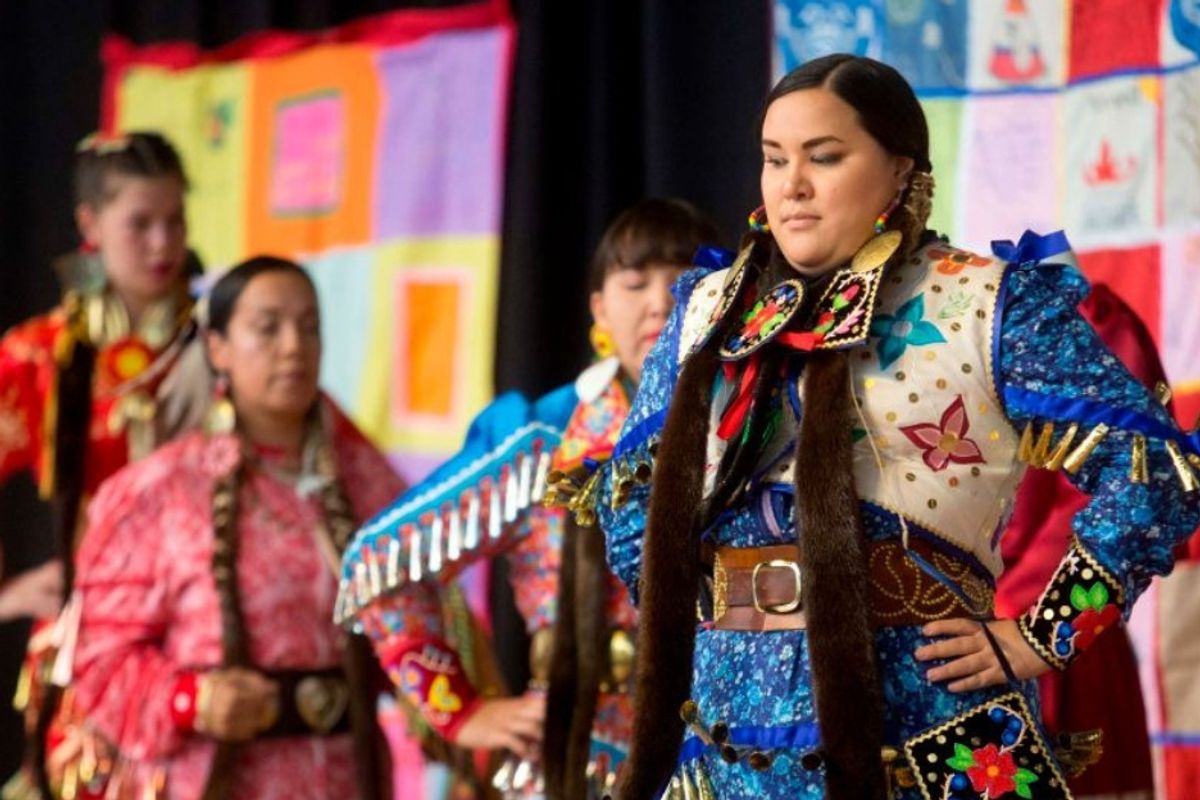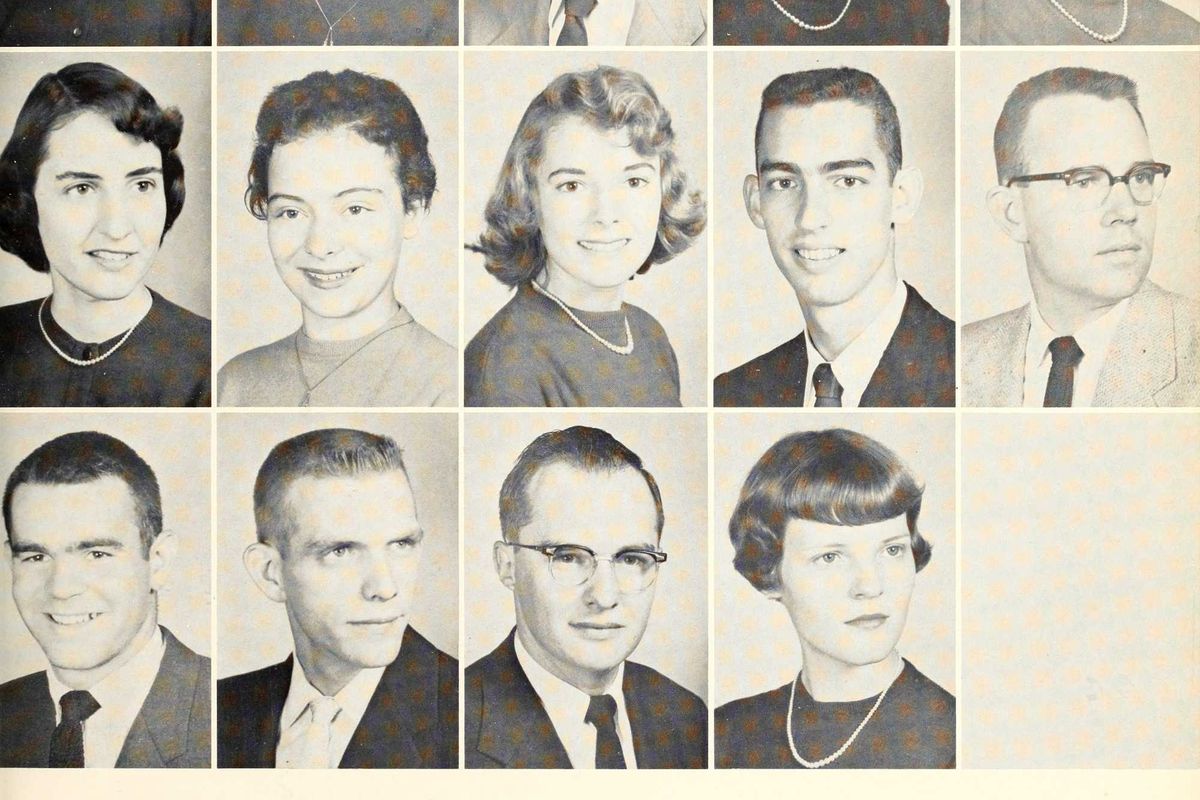Canada has acknowledged its genocide of Indigenous women.
When will the U.S. follow suit?

After a two-plus year inquiry, Canada has acknowledged that its epidemic of missing and murdered Indigenous women amounts to genocide.
In 2016, the Canadian government launched the National Inquiry into Missing and Murdered Indigenous Women (MMIW) to examine the disproportionate number of Indigenous women who have been killed or have disappeared in Canada. On June 3, 2019, The inquiry commissioners presented their final report—1,200 pages filled with stories and evidence showing that "persistent and deliberate human and Indigenous rights violations and abuses are the root cause" of this epidemic.
Chief commissioner Marion Buller of the Mistawasis First Nation didn't mince words as she presented the findings to Prime Minister Justin Trudeau.
"Despite their different circumstances and backgrounds, all of the missing and murdered are connected by economic, social and political marginalization, racism, and misogyny woven into the fabric of Canadian society," explained Buller. "The hard truth is that we live in a country whose laws and institutions perpetuate violations of fundamental rights, amounting to a genocide against Indigenous women, girls, and 2SLGBTQQIA people."
Trudeau acknowledged the report's full findings at the Women Deliver conference in Vancouver, B.C. the following day. "We recognized the need for a national public inquiry into missing and murdered Indigenous women and girls, and we have commissioners who came back with findings of fact and with calls to action," he said. "We thank them for their work, we applaud their work, and we accept their findings—including that what happened amounts to genocide."
The report includes 231 Calls to Justice directed at governments at all levels, as well as institutions, organizations, and everyday Canadians. Commissioner Buller says these action calls are not mere recommendations, but "legal imperatives." How effectively and expediently those calls to justice are implemented remains to be seen.
While arguably a step in the right direction, the Inquiry has been beleaguered by disagreements about approaches and distrust from some Indigenous communities.
From its outset, the public inquiry faced challenges. One of the original five commissioners resigned over disagreements over how the inquiry would be conducted. Some Indigenous communities did not feel adequately represented by the commission, and some families complained that their calls to the commission to share their stories went unanswered. The Native Women's Association of Canada issued periodic report cards on which commitments of the commission were being met and which weren't, and each report card was a mixed bag.
Conducting an inquiry commissioned by a colonial government about a deeply painful indigenous reality was never going to be an easy task. The process opened wounds and recalled heinous historic oppression for many. At the same time, having an official record and recognition of the lived reality of Indigenous people is a historic step. It's what comes next that is the question.
"The report has been triggering for many, as have the reactions to it," says Alison Tedford, an Indigenous woman from the Kwakiutl nation who lives in B.C. "There are deep seated feelings that come with these truths and reactions will vary widely because of the diversity of experiences represented. It will take a great many voices to talk this through."
"What resonated for me was the witness concerns about the failure to implement existing recommendations," Tedford told Upworthy, "and how that represents a lack of political will for change. This history of inaction makes it difficult to hold hope that these calls to justice will be implemented either and that is an uncomfortable feeling to have as an Indigenous woman, that those who could contribute to a safer today and tomorrow for you and your family might choose not to, even as they acknowledge this is genocide. There has been an erosion of trust."
Other Indigenous women have expressed similar apprehension about the ultimate outcome of the Inquiry. Indigenous writer and teacher Andrea Landry wrote in a Chatelaine op-ed, "The fact that the recommendations made within the inquiry are not legally enforceable, nor legally binding, goes hand in hand with the reconciliation agenda of the government today; a facade with limited space for permanent social change for Indigenous peoples. It can also be seen as the government using the emotional labour of the families involved that will, in the end, maintain colonial supremacy and the continued exploitation of the land and the bodies of Indigenous women and 2SLGBTQQIA peoples."
The enormity of the report and the sweeping calls to justice speak to the vastness of the issue, as well as what it will take to make real movement forward.
"Our collective history and present reality of trauma is laid bare in this multitude of words," says Tedford. "It is noted there is a role for everyone. Oppression of this magnitude took an immense amount of collaboration and an equal force of sheer will and determination to make this a safe place at last will be needed to effect meaningful change, in my opinion."
"There are calls to justice not just to government agencies, health care providers, educators but also to everyday Canadians. There are ways each person can contribute to the safety and security of Indigenous women, girls and 2SLBGTQQIA people and that's empowering. Immediate, dramatic, paradigm shift—these words are used to describe the urgency and scale of required changes. It will be a challenge, and I hope Canada is up for it."
What does all of this mean for the U.S., which has a similar colonial history and a MMIW movement of its own?
Though Canada is by no means perfect, there's a lot the U.S. could learn from our northern neighbors when it comes to acknowledging Native communities and the impact colonialism has had—and continues to have—on Indigenous communities.
I was struck by how each session at the Women Deliver conference in Vancouver began with an acknowledgment that we were meeting on the traditional, ancestral, and unceded lands of the Tsleil-Waututh, Musqueam, and Squamish Nations people. Then I learned that such land acknowledgments are common in B.C. I've maybe seen that done once in the U.S., and only at a small event. Land acknowledgment is not a huge thing, but it's something. (There's a Native Land App you can use to see whose ancestral lands you're on at any given time.)
Indigenous voices in the U.S. have been speaking out about the MMIW epidemic in our country for years, and it's still unknown to many. We have had no national inquiry commissioned, and it's hard to imagine one coming during the current administration. However, there are a couple of legislative initiatives addressing MMIW that we as citizens can lean on our congressional representatives to support.
The first is Savanna's Act, a bill that bolsters the data tracking of missing and murdered Native Americans, standardizes law enforcement and justice protocols, and requires the Department of Justice to provide training and technical assistance to tribes and law enforcement to implement new protocols.
The second is the Not Invisible Act of 2019, which would increase intergovernmental coordination to identify and combat violent crime on native lands and against native peoples.
Further, we can follow grassroots initiatives like the Red Ribbon Alert Project, which offers an alert system for when a Native American woman goes missing, and perhaps most importantly, educate ourselves on issues Indigenous communities face and the role our institutions and governments play in those issues. We need to understand how the oil, gas, and other extraction industries affect human trafficking in Native American communities, for example.
Historically, our nation has much to atone for, but there are also immediate actions we can take to help eliminate an issue Indigenous women and girls are facing right here, right now.
- 5 million Indian women just made a 385-mile human chain for equality. ›
- In 1989, A Man Murdered 14 Women At A Canadian School. Here's ... ›
- Native women are going missing at epic rates. A 19-year-old wants ... ›
- Indigenous women in Canada are suing over forced sterilizations ... ›
- Former health insurance exec says the industry pushes lies about Canada's healthcare system - Upworthy ›
- Congress passes a landmark bill to help stop the epidemic of violence against Indigenous women - Upworthy ›
- The Oregon Trail game got a revamp with more authentic Native American representation - Upworthy ›
- A couple had a wedding on the U.S.-Canada border so her grandmother could attend - Upworthy ›
- Canadian volunteers scour river for missing Indigenous women ... ›
- After Canada's National Inquiry Into Murdered and Missing ... ›
- Thousands of killed or missing Indigenous women and girls are ... ›
- Investigating A 'Canadian Genocide' Of Indigenous Women : NPR ›
- National inquiry calls murders and disappearances of Indigenous ... ›
- Deaths of indigenous women 'a Canadian genocide', leaked report ... ›
- 'Genocide' Has Been Committed Against Indigenous Women And ... ›
- Canada 'complicit in race-based genocide' of indigenous women ... ›
- Missing and murdered Indigenous women - Wikipedia ›
- Canadian Inquiry Calls Killings of Indigenous Women Genocide ... ›





 Millennial mom struggles to organize her son's room.Image via Canva/fotostorm
Millennial mom struggles to organize her son's room.Image via Canva/fotostorm Boomer grandparents have a video call with grandkids.Image via Canva/Tima Miroshnichenko
Boomer grandparents have a video call with grandkids.Image via Canva/Tima Miroshnichenko
 Smiling at work, checking messages during a break.
Smiling at work, checking messages during a break. Man focused on his phone screen, deep in thought.
Man focused on his phone screen, deep in thought. Focused multitasking at the office.
Focused multitasking at the office.